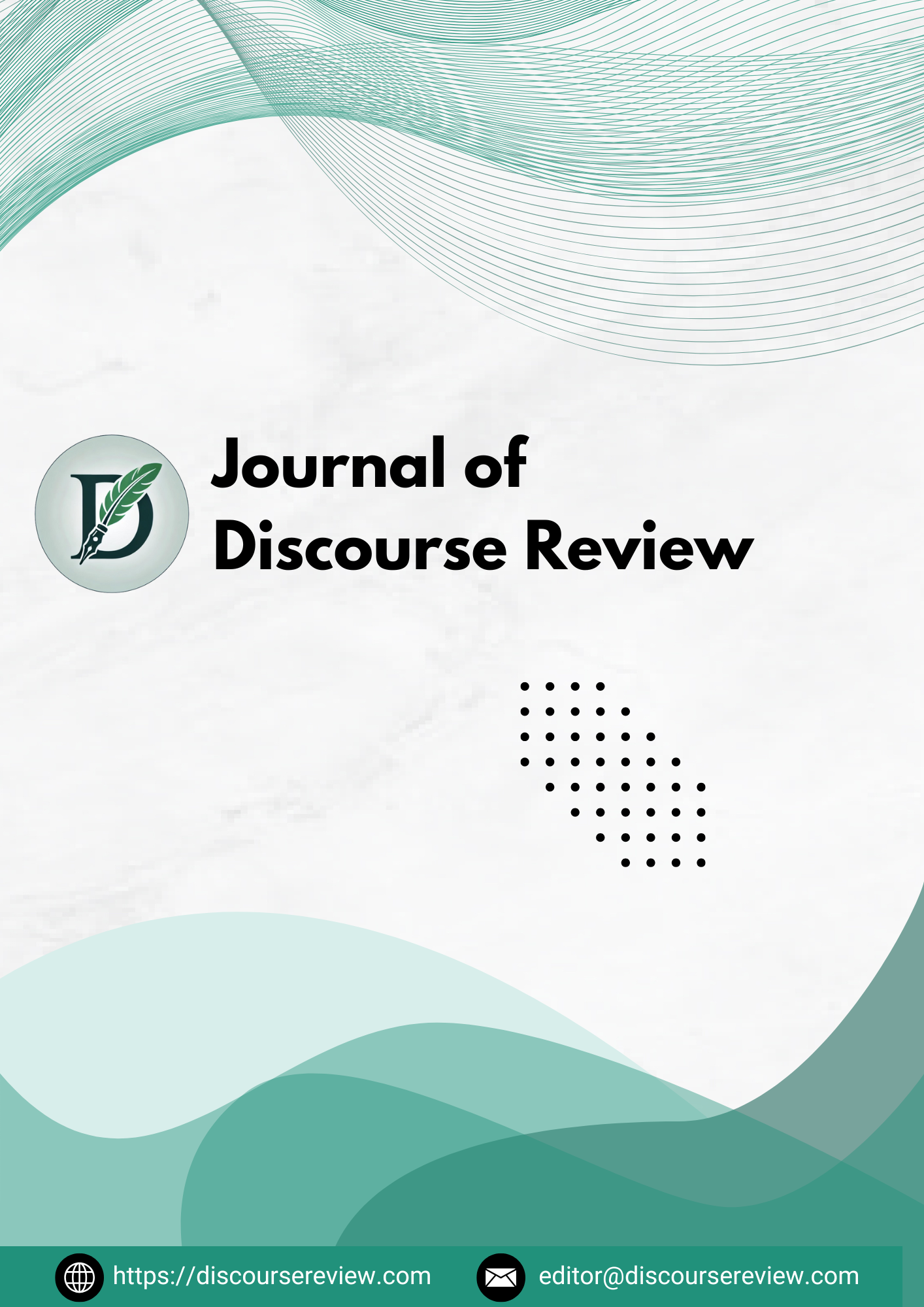
Journal of Discourse Review
Open Access Humanitarian scholarship
7 days
Time to first decision

Open Access Humanitarian scholarship
Time to first decision
Volume: 1 Issue: 1
Year: 2025, Page: 23-31,
Received: Feb. 18, 2025 Accepted: March 18, 2025 Published: April 22, 2025
The term “Global South” refers to emerging countries with shared histories of colonisation and economic marginalisation, including those in Latin America, Africa, Asia, and Oceania. India plays a crucial role in the Global South, using its democratic system, expanding economic power, and advantageous geopolitical location to promote just global governance. India participates in many international organisations, including the G20, BRICS, and the Non-Aligned Movement, to address poverty, climate change, and sustainable development challenges. However, problems still exist at the domestic level, such as managing various socioeconomic inequalities at home, negotiating complicated international relations, and striking a balance between environmental sustainability and economic growth. Initiatives like the International Solar Alliance and development assistance programs highlight India’s commitment to South-South cooperation and its engagement with the Global South. India’s capacity to resolve these issues while promoting equitable and sustainable development will determine the course of its future involvement in the Global South. This research paper explores India’s capability to lead the global south while promoting equitable, just, multipolar governance at the international level and national progress towards developed India. It is an attempt to critically analyse India’s position in the Global South from a third-world perspective and its domestic capabilities to fulfil its global aspirations. The methodology for this research paper is descriptive, historical and analytical. This analytical manuscript finds India’s potential in the Global South convincing to lead the Global South while promoting South-South Cooperation. It also suggests emphasising constructive solutions of domestic affairs and promoting equitable and inclusive growth.
Keywords: Global South, global governance, sustainable development, South-South cooperation, Developed India.
Bayly, C. A. (1988). Indian society and the making of the British Empire. Cambridge University Press.
https://doi.org/10.1017/CHOL9780521250924
Brown, J. M. (2008). Gandhi and civil disobedience: The Mahatma in Indian politics 1928–34. Cambridge
University Press.
Central Ground Water Board (CGWB). (2021). Dynamic groundwater resources of India. Ministry of Jal Shakti,
Department of Water Resources, River Development & Ganga Rejuvenation.
Chaturvedi, S., & Kumar, S. (2022). India’s G20 presidency: Pushes global economy, ensures space for Global
South. Indian Foreign Affairs Journal, 17(3–4), 146–157. https://www.jstor.org/stable/48772506
Gray, K., & Gills, B. K. (2016). South–South cooperation and the rise of the Global South. Third World Quarterly,
37(4), 557–574. https://doi.org/10.1080/01436597.2015.1128817
International Solar Alliance (ISA). (2018). Annual report. https://isolaralliance.org
Jain, B. M. (2014). India in the new South Asia: Strategic, military and economic concerns in the age of nuclear
diplomacy. I.B. Tauris.
Kumar, S. (2024). India's G20 presidency as a voice of Global South (Discussion Paper No. 291). Research and
Information System for Developing Countries.
https://ris.org.in/sites/default/files/Publication/DP%20291%20Sushil%20Kumar.pdf
Kumar, S., & Khannawalia, P. (2025, January 15). Bharat’s role in shaping the Global South agenda in 2025. The
Diplomatist. https://diplomatist.com/2025/01/15/bharats-role-in-shaping-the-global-south-agenda-in-2025/
NITI Aayog. (2025). Annual report 2024–25. Ministry of Statistics and Programme Implementation.
https://www.niti.gov.in/sites/default/files/2025-02/Annual%20Report%202024-
25%20English_FINAL_LOW%20RES_0.pdf
Oxfam India. (2021). Inequality kills: India supplement 2021. https://www.oxfamindia.org
Pant, H. V. (2016). India in the Indian Ocean: A mismatch between ambitions and capabilities? In H. V. Pant
(Ed.), The rise of the Indian Navy: Internal vulnerabilities, external challenges (pp. 121–137). Routledge.
https://doi.org/10.4324/9781315553399-10
Prashad, V. (2007). The darker nations: A people’s history of the Third World. The New Press.
Rosenbaum, H. J. (1975). From charisma to routine: The impact of Nehru’s leadership on the Indian political
system. Journal of Developing Areas, 9(2), 187–208.
Sidhu, W. P. S. (2018). India and the International Solar Alliance: Challenges and opportunities. Energy Policy,
120, 676–683.
United Nations (UN). (2021). World economic situation and prospects 2021. United Nations Department of
Economic and Social Affairs. https://desapublications.un.org/file/943/download
Virmani, A. (2024). Viksit Bharat: Unshackling job creators and empowering growth drivers (pp. 27–28). NITI
Aayog.
Vines, A., & Oruitemeka, B. (2008). Bullets to ballots: The reintegration of UNITA in Angola. Conflict, Security
& Development, 8(2), 241–263.
World Bank. (2020). Poverty and shared prosperity 2020: Reversals of fortune.
https://www.worldbank.org/en/publication/poverty-and-shared-prosperity
World Health Organization (WHO). (2018). Air pollution and child health: Prescribing clean air.
https://www.who.int/publications/i/item/air-pollution-and-child-health
© 2025 JDR Academic Trust. This is an open-access publication distributed under the terms of the Creative Commons Attribution 4.0 International License (CC BY 4.0). https://creativecommons.org/licenses/by/4.0/
Imam, H. (2025). India’s Role in the Global South: Leadership, Partnerships, and Policy Challenges. Journal of
Discourse Review, 1(1), 23-31.